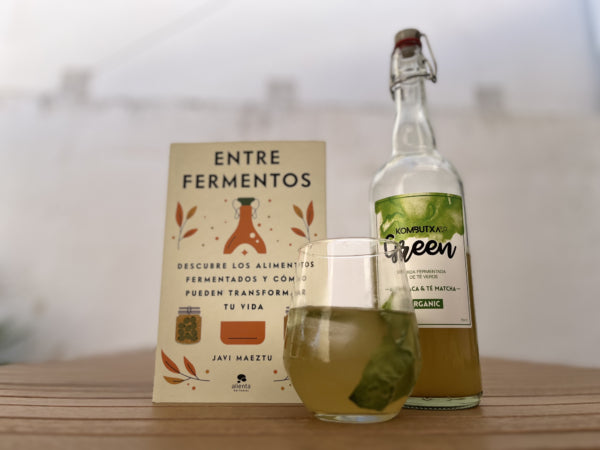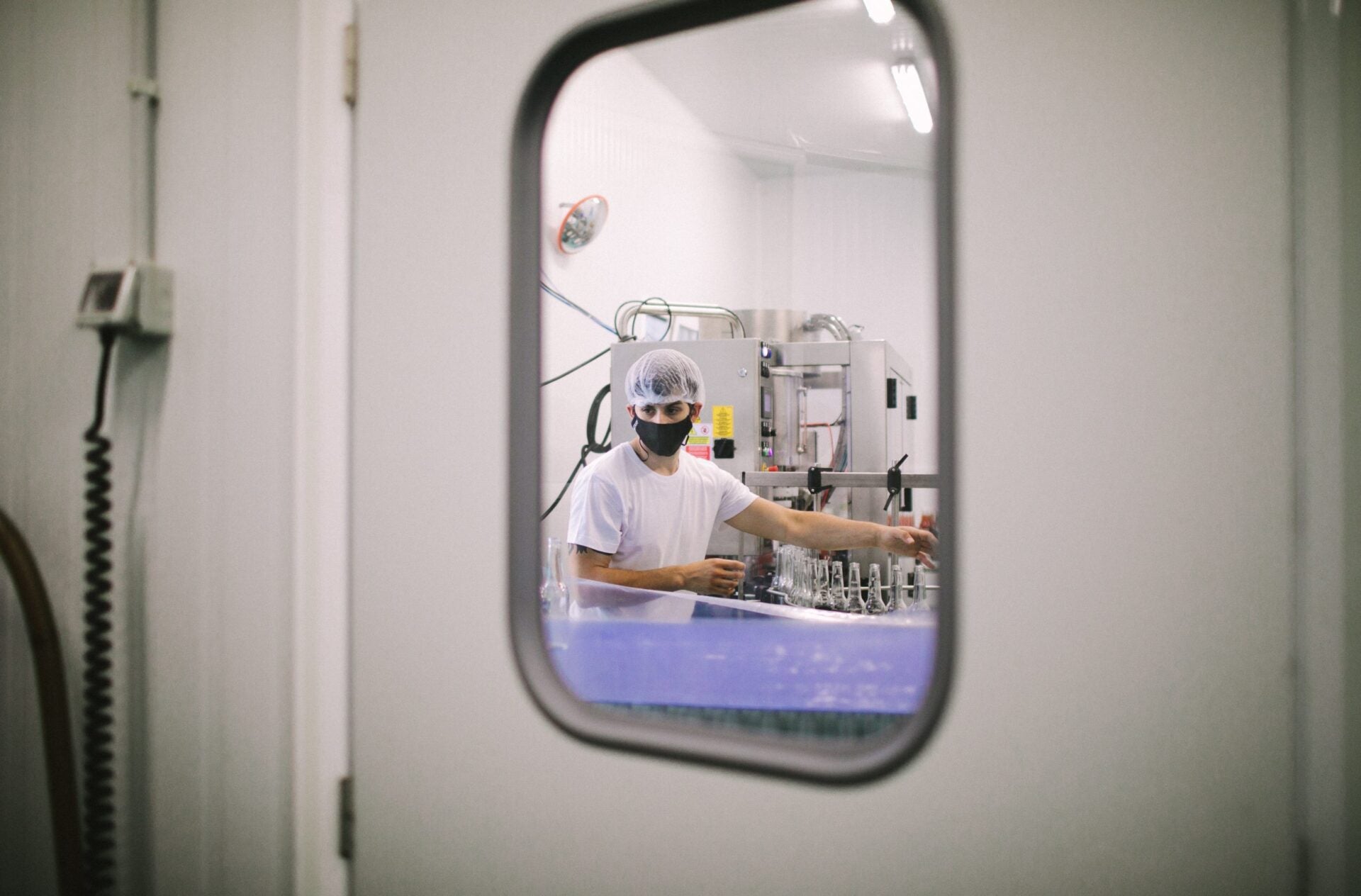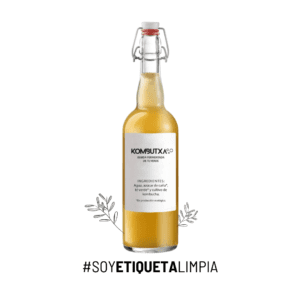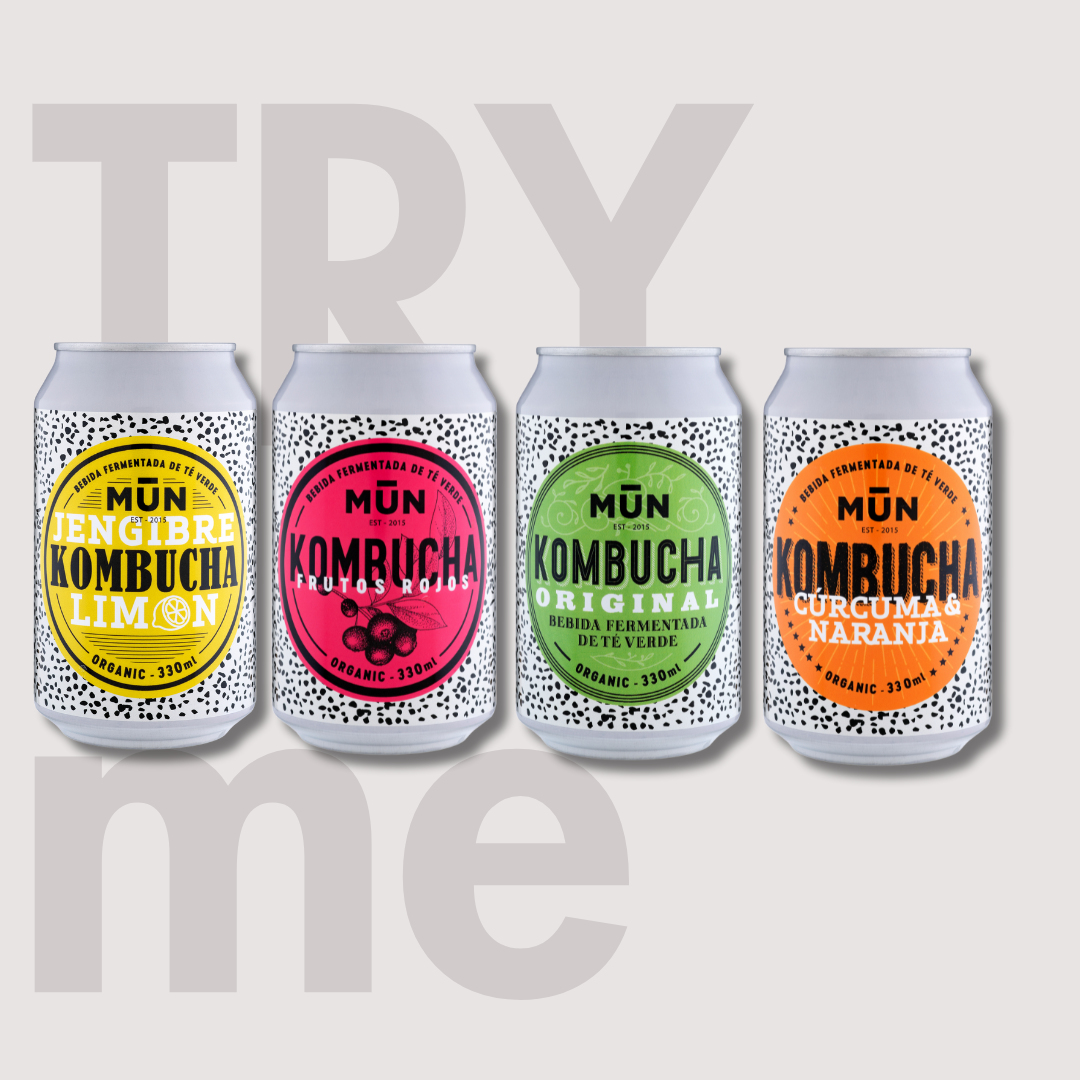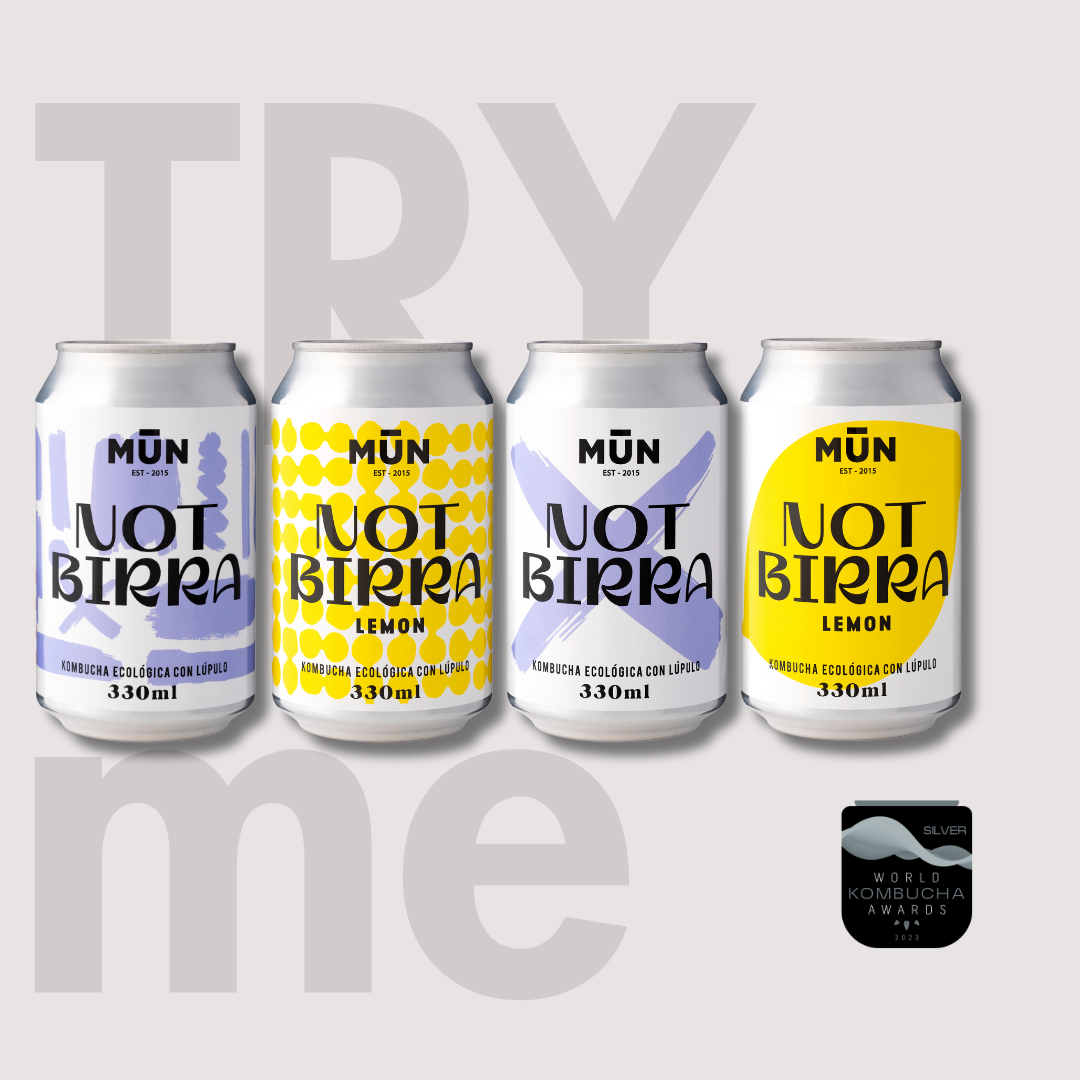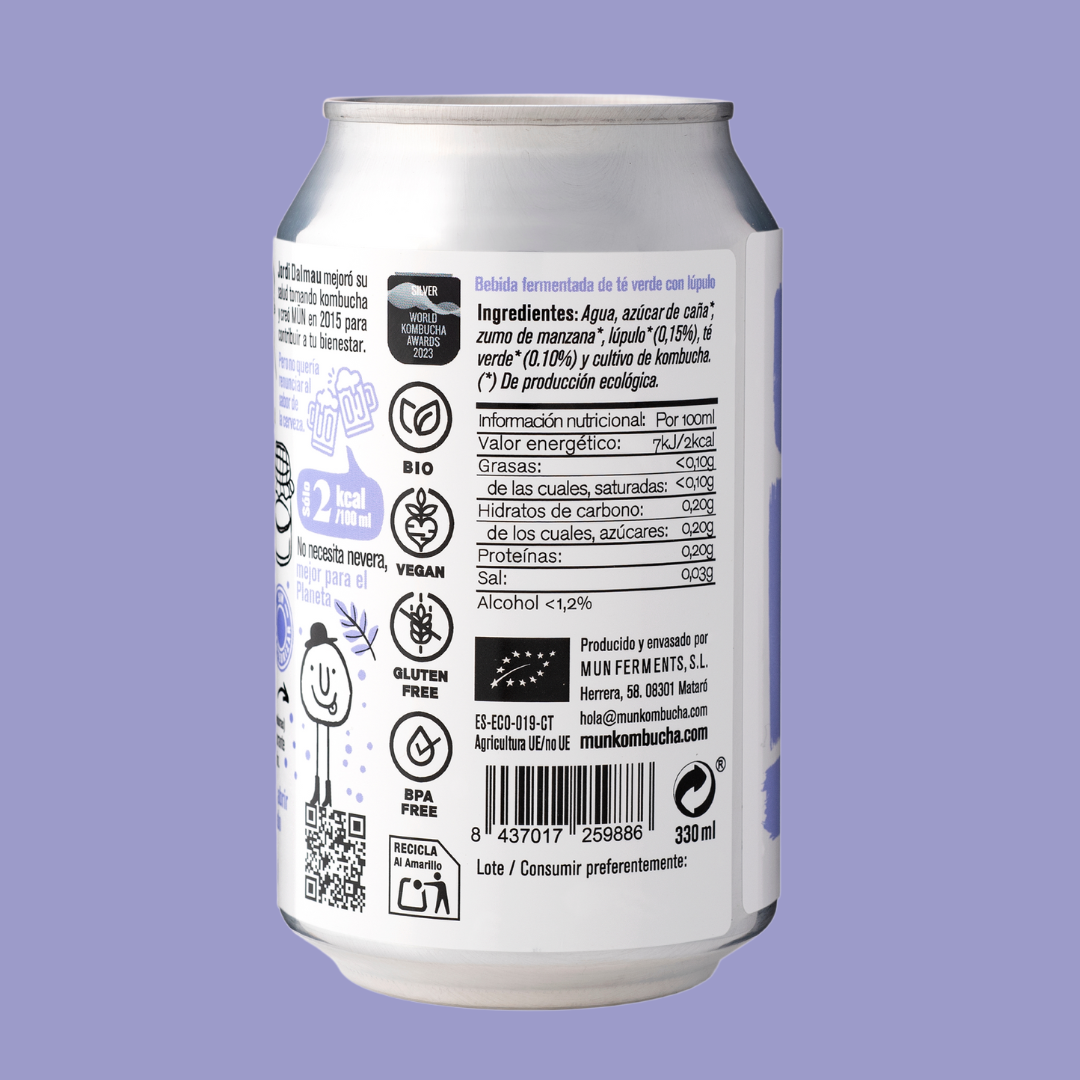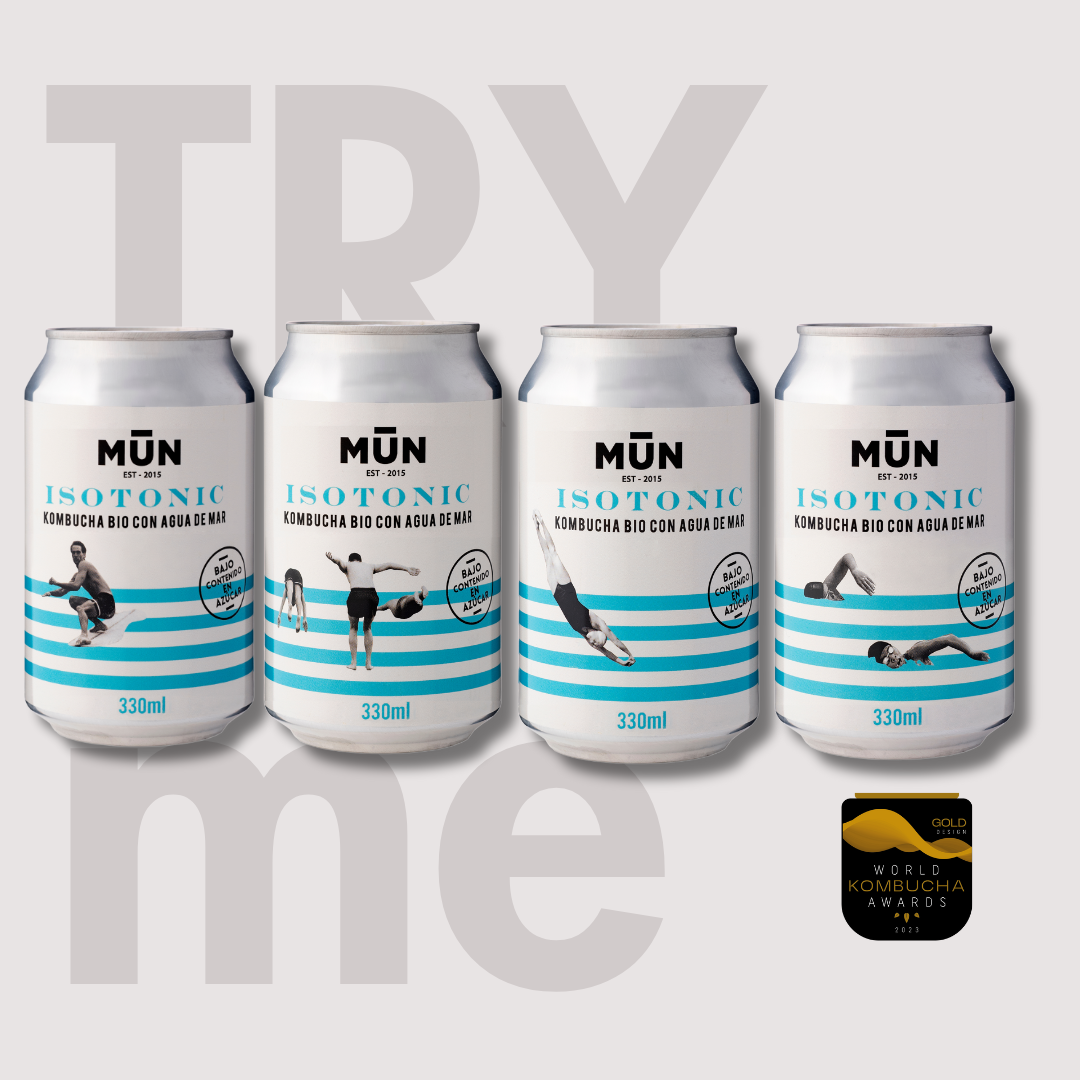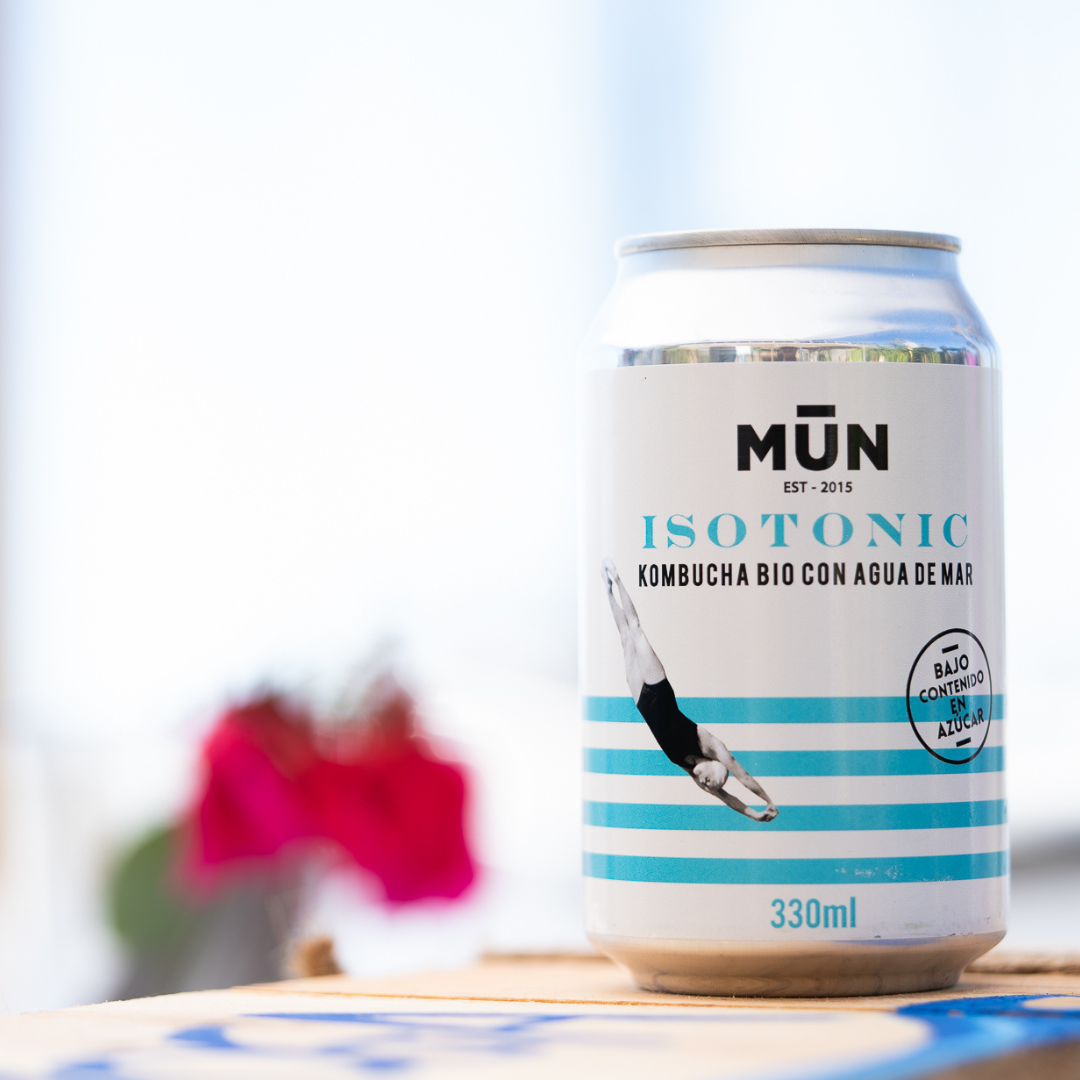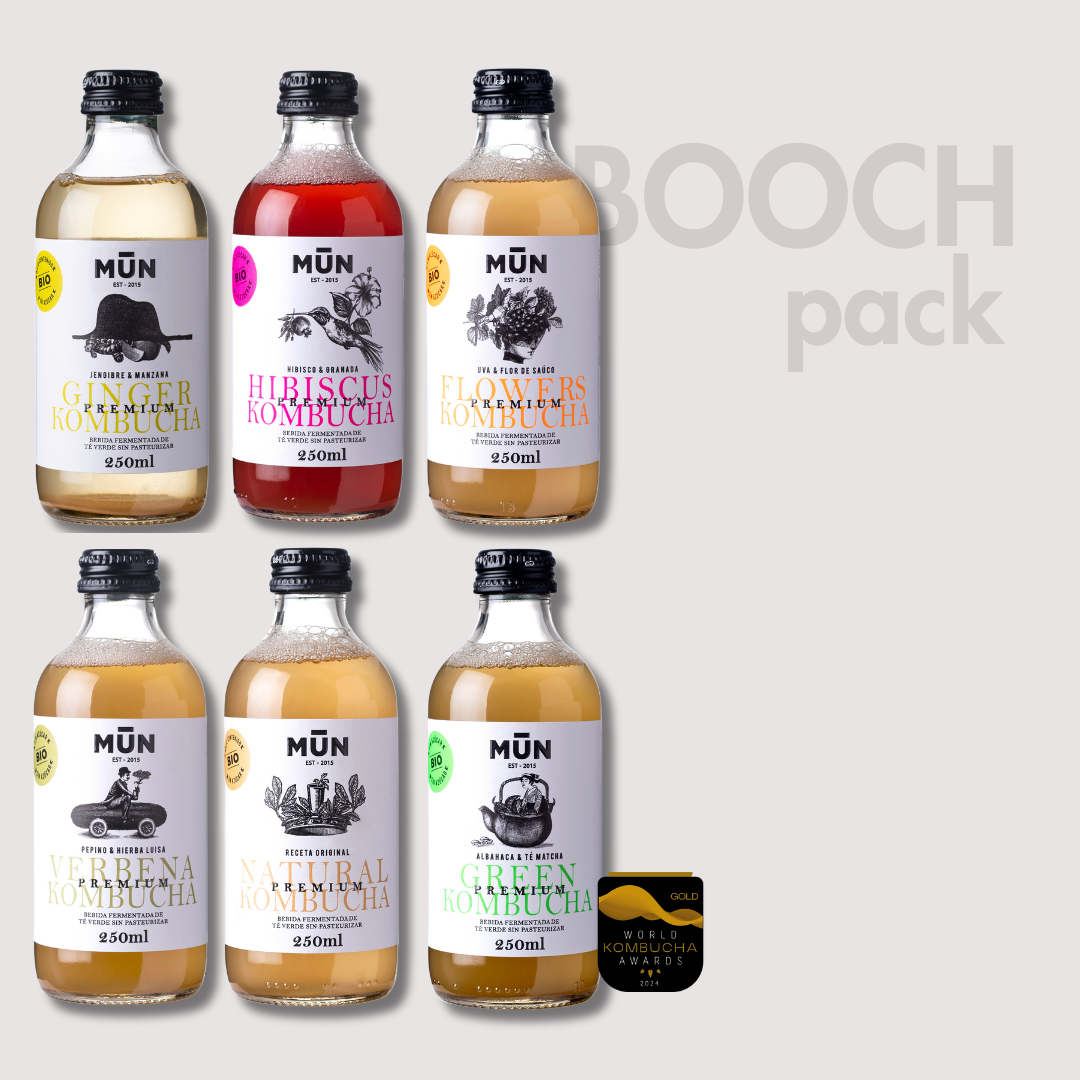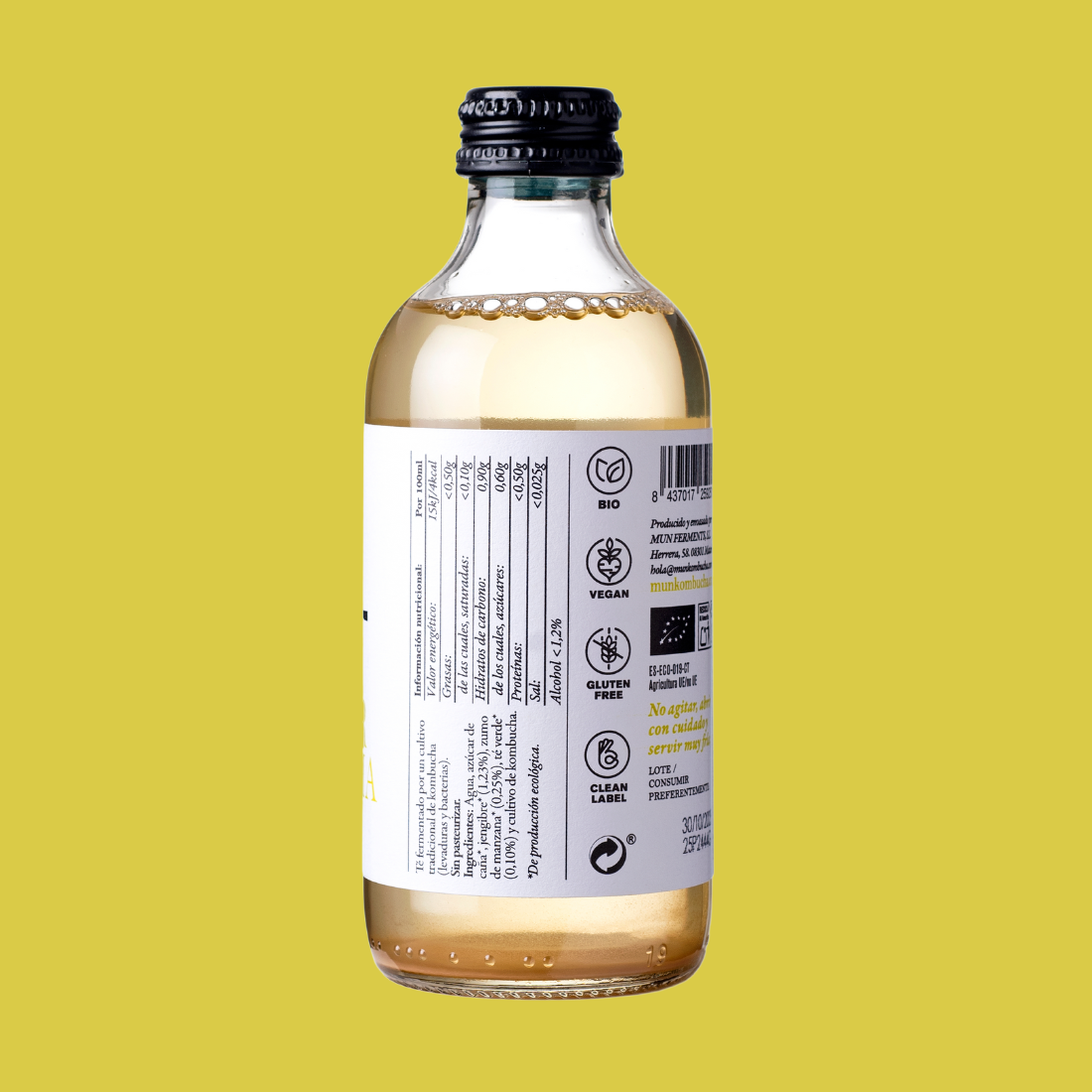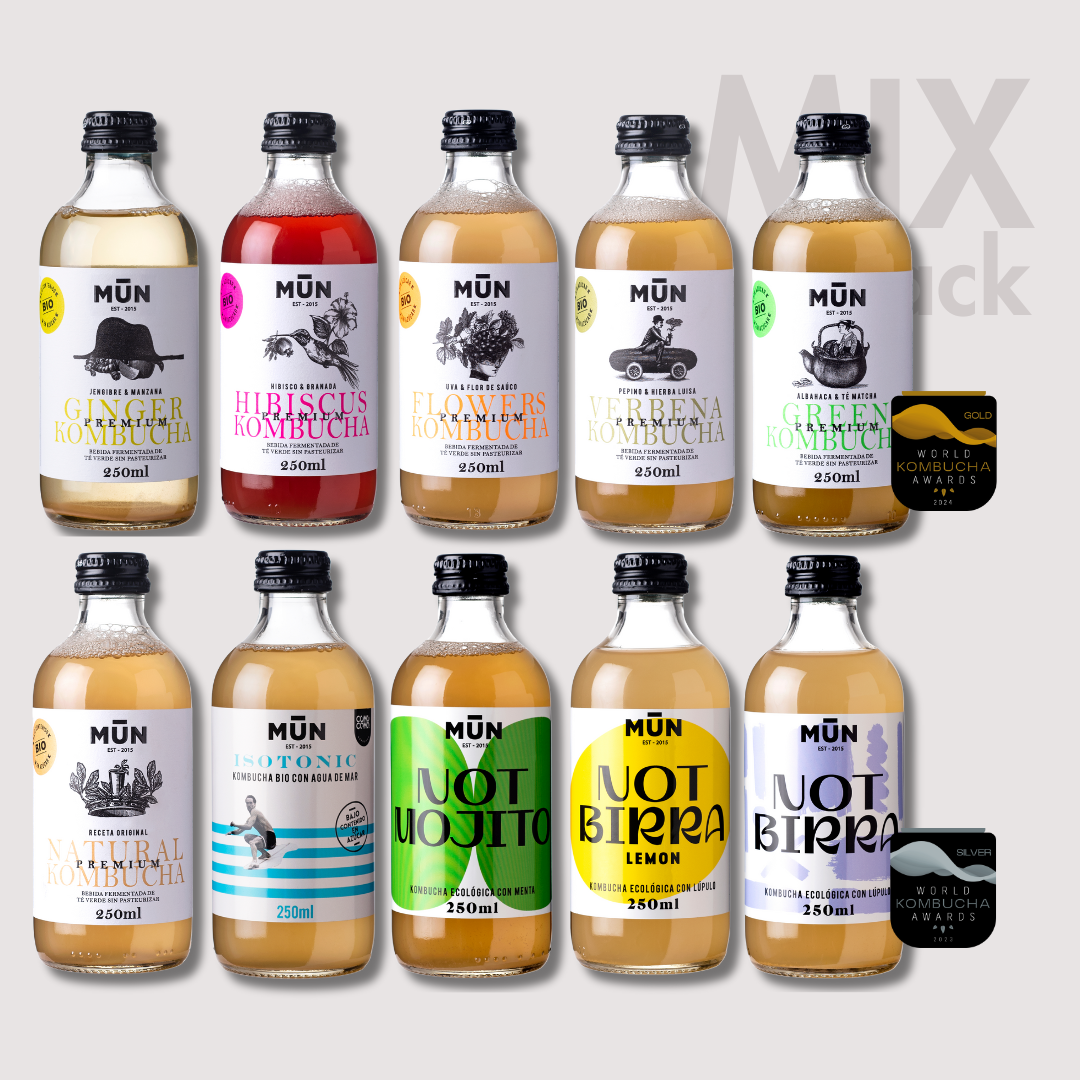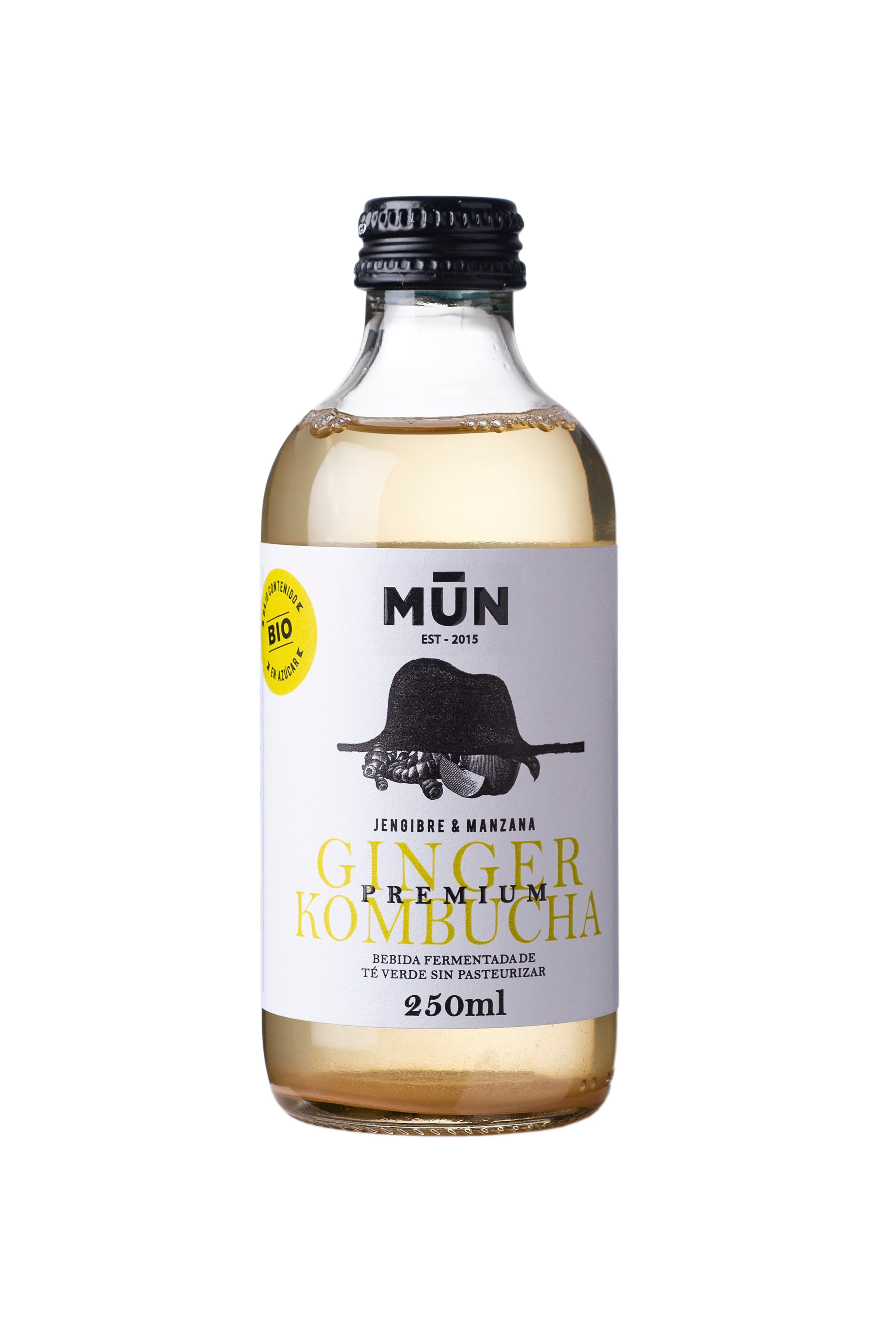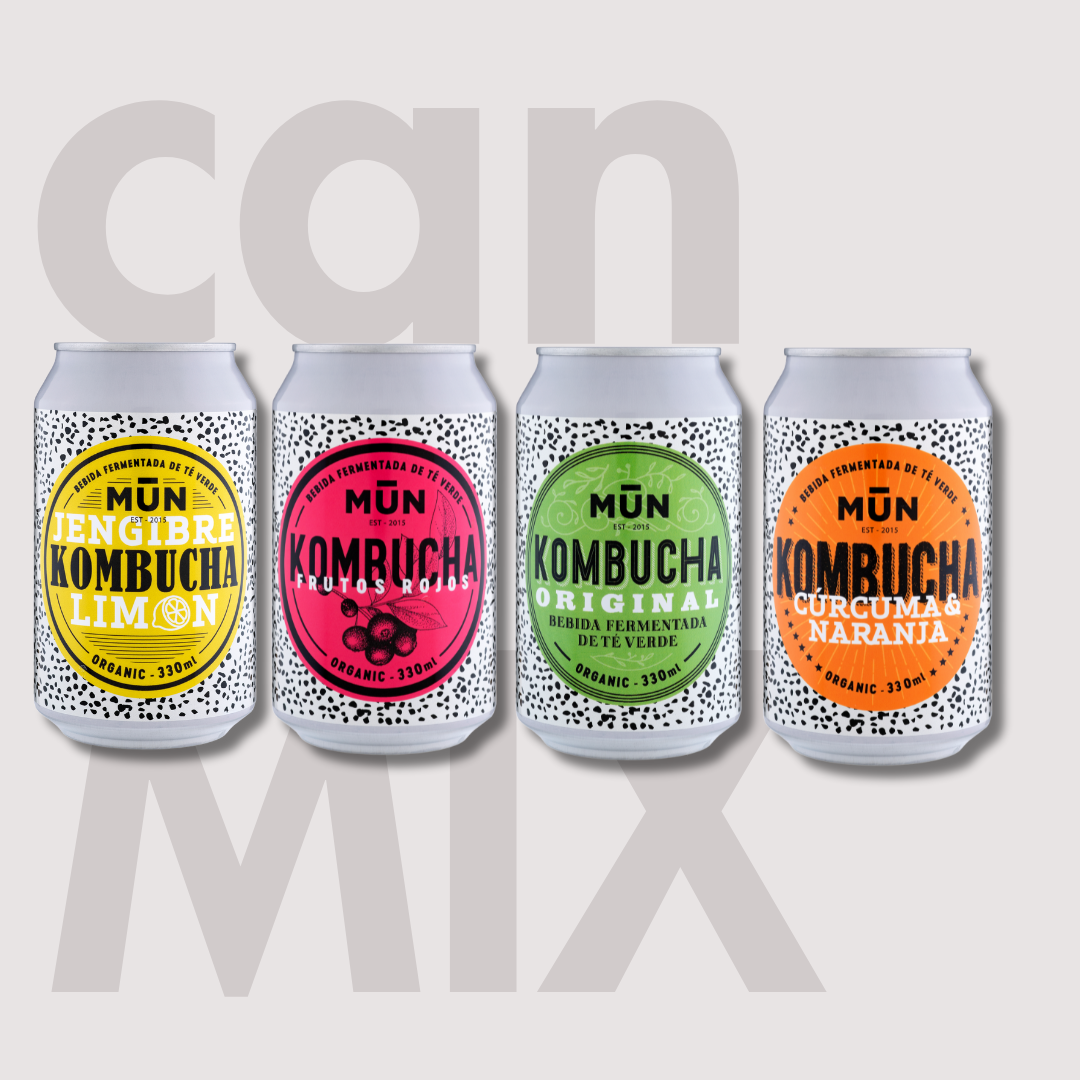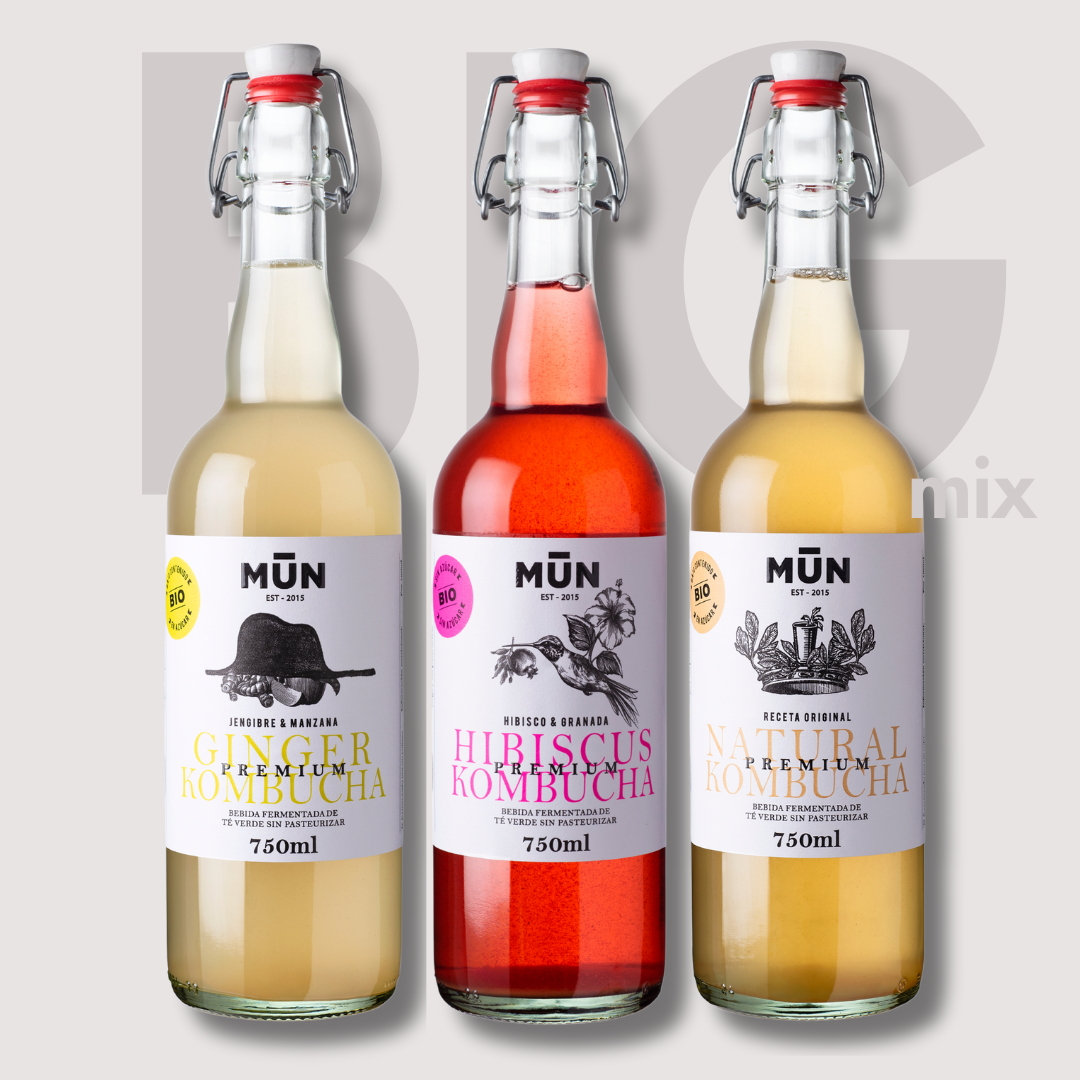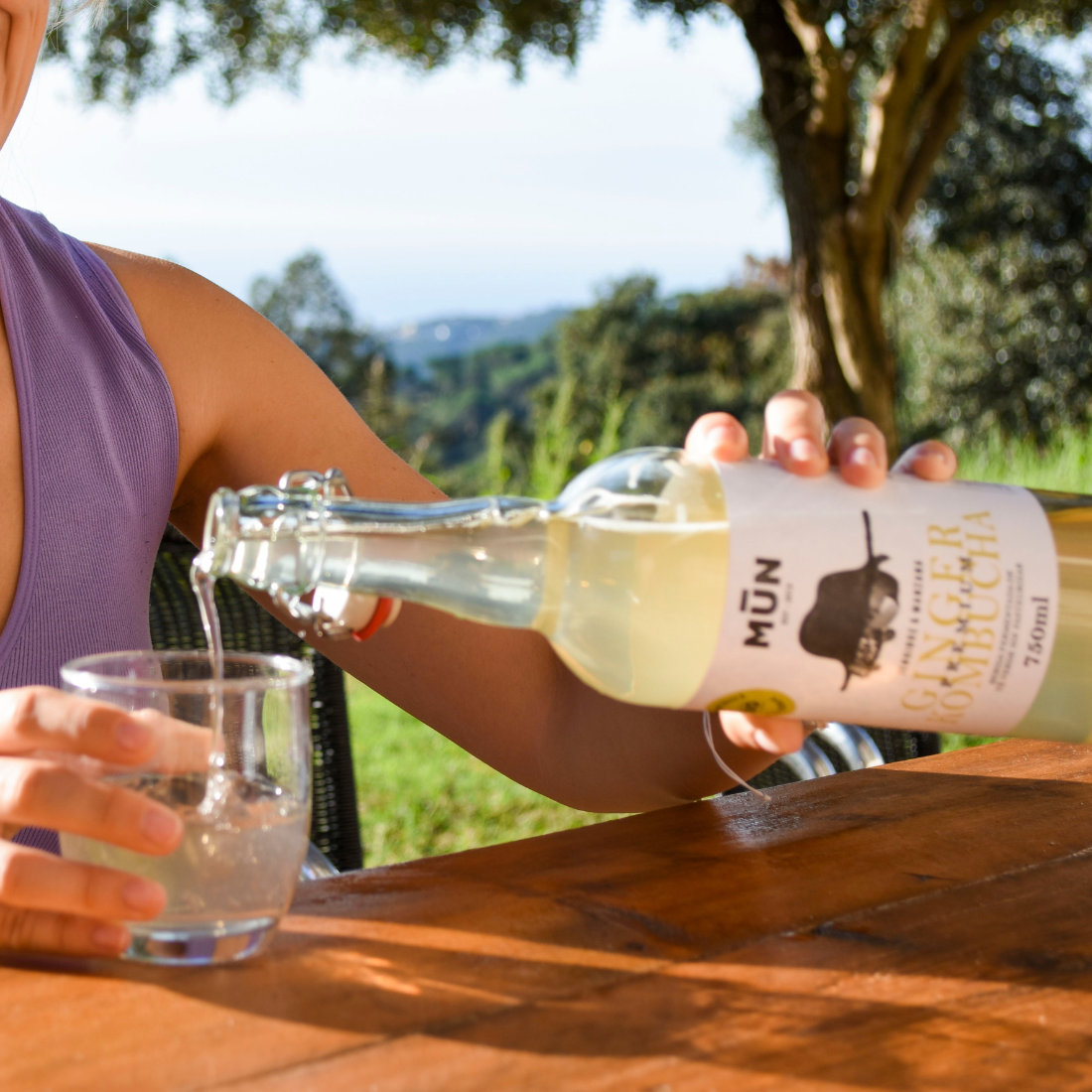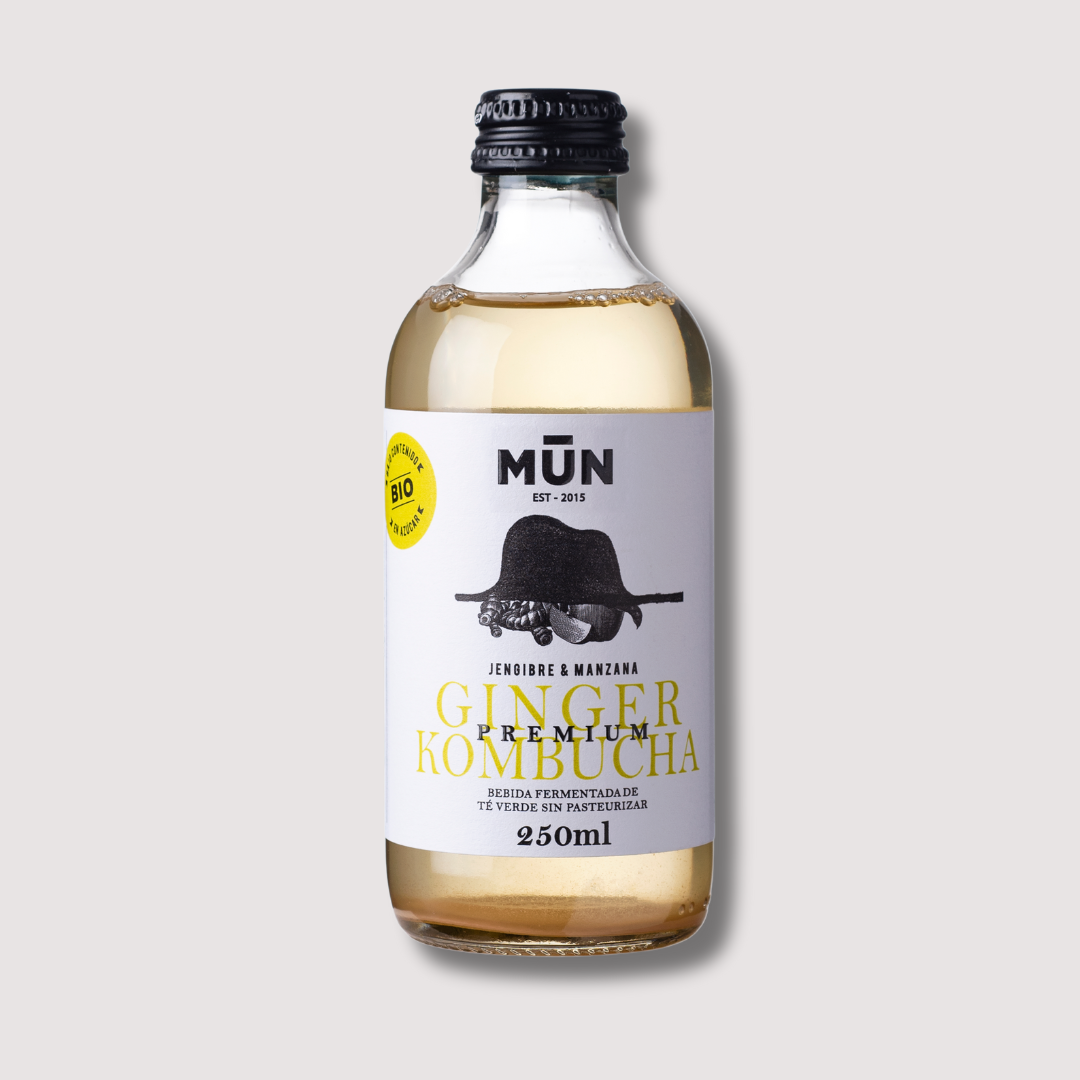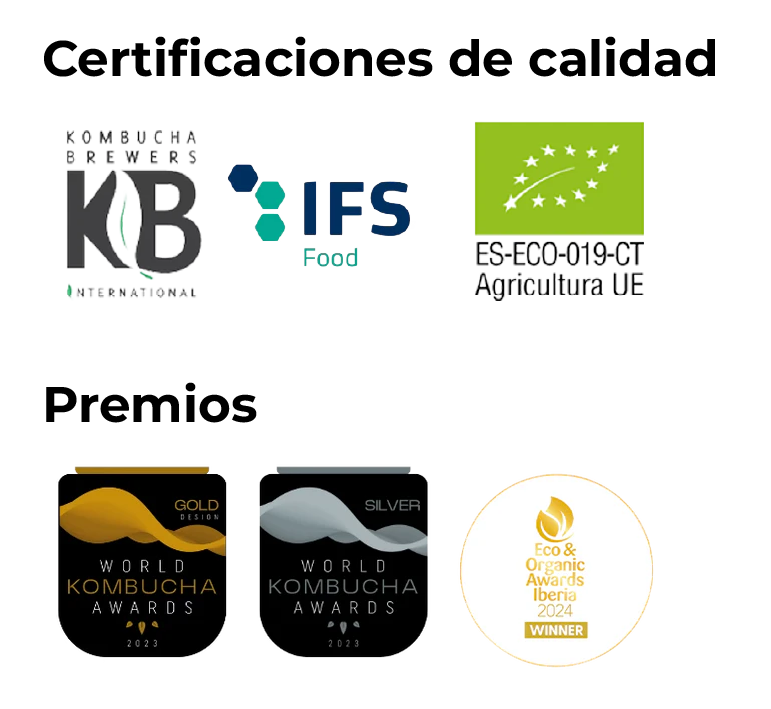The world of kombucha is exempt from regulation worldwide. That is why choosing a quality kombucha and, above all, one that is authentic, is not an easy task. It does not depend on the flavor of the drink, which, by the way, bears little resemblance to that of a soft drink as we now understand it. Nor its appearance: it may be bubbly and the gas it contains may be added after the fact instead of having been created during the fermentation process.
Thorough inspection of the label is the only effective method for potential consumers to rule out “bad copies.” In reality, it is very very easy for them to be offering you a soft drink with the name kombucha.
The only pseudo-regulation of kombucha is the Code of Good Practices of Kombucha Brewers International (KBI), the association that brings together kombucha producers from all over the world and of which we have been a part since our birth. Among others, this code points out the ingredients that should (and should not) be included in the recipe for a good kombucha or the name that drinks receive when they are not strictly water, sugar, tea and kombucha culture. They are recommendations made by an unofficial body, they are not law and, here the problem arises. Not all kombucha producers and marketers respect them and the conflict is placed on the roof of those who intend to drink a kombucha and who, without knowing it, may not get it right.
So: what happens when no one controls whether a drink is labeled as kombucha? Well, confusion is served. Once again, information is power and thoroughly inspecting the labels becomes an obligation for those who do not want to be deceived. Knowing all the ingredients that are included is essential, but there are some very important aspects to take into account when choosing correctly. The nutritionist dietitian, expert in fermented foods and head of the Fermentista Academy, Javi Maeztu , explains it, in great detail, in his latest book "Between ferments" .
Edited by Alienta, the volume tries to put white on black for all those who are starting out in the exciting world of fermented foods. Among others, Maeztu travels through the fascinating universe of fermentation in gastronomy, microbiology and health, and offers information on home-made fermented foods. One of the most notable chapters of the book is the one that tries to shed light on consumers who, when faced with a supermarket shelf or refrigerator, are not sure how to choose an authentic product, without tricks or cardboard. In the case of kombucha, the classification that Maeztu exposes would include 7 types of drink that you can currently buy. Not always, we warn, it can be considered kombucha.
★★★★★ Traditional Kombucha
In first place, Maeztu points out, is kombucha that contains " water, sugar, tea, kombucha cultures and fruits or spices for flavoring ." Nothing else. It has to be kept cold. If it is not, it should have almost no residual sugar and the label should indicate that it is unpasteurized . I advise you to also look at the nutritional information to check how much sugar it contains.»
For the student of fermented foods, it is important to look for one that does not have more than 3.5 grams (of sugar) per 100 milliliters or that is not far from this figure. "There are some with a lot of sugar that are not recommended for regular consumption." This type of kombuchas gets 5 stars in the Maeztu ranking.

Ingredients : Water, cane sugar*, basil* (0.50%), apple juice*, green tea* (0.11%), matcha tea (0.06%) and kombucha culture. *Organic production.
Green by Mūn Kombucha is an example of traditional kombucha. It is not pasteurized, and due to its low sugar content it does not need to be kept cold. Its ingredients are the minimum and necessary to make kombucha: water, sugar, tea and kombucha culture, and other natural ones such as basil, apple juice.
★★★★☆ Kombucha with sweeteners
With 4 stars, kombuchas that contain sweeteners such as erythritol or steviol glycosides, unpasteurized.

Ingredients : Water, cane sugar*, sweetener (erythritol*), cranberry juice* (0.38%), hibiscus flower* (0.32%), green tea* (0.09%), leaf infusion of Stevia rebaudiana Bertoni*, natural strawberry flavor and kombucha culture. *Organic production.
Mun Kombucha Superberries is an example of kombucha with sweeteners, in this case erythritol. It is not pasteurized, and due to its low sugar content it does not need to be kept cold. Its ingredients are the minimum and necessary to make kombucha: water, sugar, tea and kombucha culture, and others such as blueberry juice, infusion of hibiscus and Stevia Rebaudiana Bertoni leaves, or natural strawberry flavor. Erythritol is used to sweeten. The sugar level is below 1 g.
★★★☆☆ Kombucha with sweeteners and carbon dioxide
With three stars, which in addition to sweeteners contain carbon dioxide.
★★☆☆☆ Pasteurized Kombucha
With 2 stars, those that are pasteurized and with added probiotics.
★☆☆☆☆ Pasteurized kombucha and a lot of chemistry
With a star those that are pasteurized and with an almost infinite list of ingredients and that start from "tea and herb extract" or those that are this mixture and contain some added probiotic to be able to say that they are a "probiotic drink."
☆☆☆☆☆ Soft drink, with kombucha
In last place in the classification are drinks that contain carbonated water as the first ingredient , followed by kombucha, flavors and sweeteners. They are not kept cold, as advertised on the labeling. "If we look at the list, what we find is a drink based on sparkling water to which some kombucha is added to give flavor and justify its name."
In summary…
Ultimately, what you should look for when choosing a kombucha is “less is more.” Few ingredients and that these correspond as closely as possible to the drink whose real origin is unknown, but which, according to several documents, could date back to around the year 221 BC. Probably, according to other written witnesses, kombucha arose from a coincidence, from an oversight, when someone forgot a sugary infusion and it ended up, as the days went by, becoming a really interesting drink.
Be informed, read as carefully as you can, know all the ingredients that a kombucha contains - that you know how to recognize them all - and choose. Only then they won't give you a hard time. Sorry, soda for kombucha.
Another day we will talk to you about fake labels in which manufacturers either hide or ignore ingredients or do not properly declare their content.

